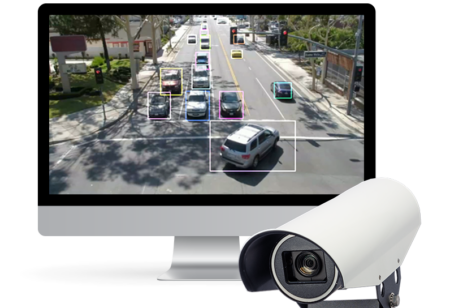Researchers at the University of Minnesota’s (UMN) Minnesota Traffic Observatory (MTO) have developed a new software tool that will help the Minnesota Department of Transportation (MnDOT) determine safe access points for high-occupancy toll (HOT) lanes.
HOT lanes are one of the many tools available to transportation agencies to help them manage traffic demand on congested urban freeways. When managing HOT lanes, roadway engineers must decide whether to allow open HOT-lane access at most points or to close access and only permit drivers to enter or exit these lanes from selected ramps and access points.
The new software tool developed by researchers at the UMN’s MTO enables MnDOT’s Regional Transportation Management Center (RTMC) to better design HOT-lane access for a good balance between service to the driving public and safety of the facility. The tool assumes an open design and produces safety and mobility performance measures along the HOT-lane facility. Given the desired balance, the tool also helps engineers design the optimal location of restricted-access sections.
In the Minneapolis-Saint Paul metropolitan area, two major freeways, the I-394 and I-35W, currently include designated MnPASS HOT lanes, and several more are planned or under construction. Until recently, drivers could only enter or exit HOT lanes from select ramps and access points.
MnDOT now prefers open-access HOT lanes for the increased options they offer road users, but needed a way to monitor and predict the incidence of shockwaves and the safety and mobility problems they create. The MTO researchers used and integrated findings from three previous studies to create the new software system.
The tool draws on historical data to identify patterns of traffic demand over time and generate predictions of points in the HOT lanes where shifts from open to closed access will offer the most benefit. The program is designed to integrate smoothly with the RTMC’s current software and data capabilities and includes a module for access design, a module for generating data, and a web application.
“While open access can greatly increase mobility by permitting vehicles to access the HOT lane as quickly as they are able after entering the freeway, there may be some safety concerns with allowing lane changes at any point,” explained John Hourdos, MTO director.
“HOT lanes tend to have lower densities and higher speeds, so vehicles crossing the lane boundary must negotiate a speed change, which can cause the vehicles approaching from behind to form a shockwave that can lead to a crash. This tool delivered to MnDOT is calibrated for the Twin Cities. It takes real-time data and diagrams each location separately for lane changes and reaction time. It took theoretical ideas and made them usable.”
Brian Kary, director of traffic operations at the RTMC, commented, “Prior to this project we didn’t have a tool to assist us in designing HOT-lane access. There is a lot of debate around the country surrounding high-occupancy designs. This tool helps us develop designs and monitor existing corridors.”




